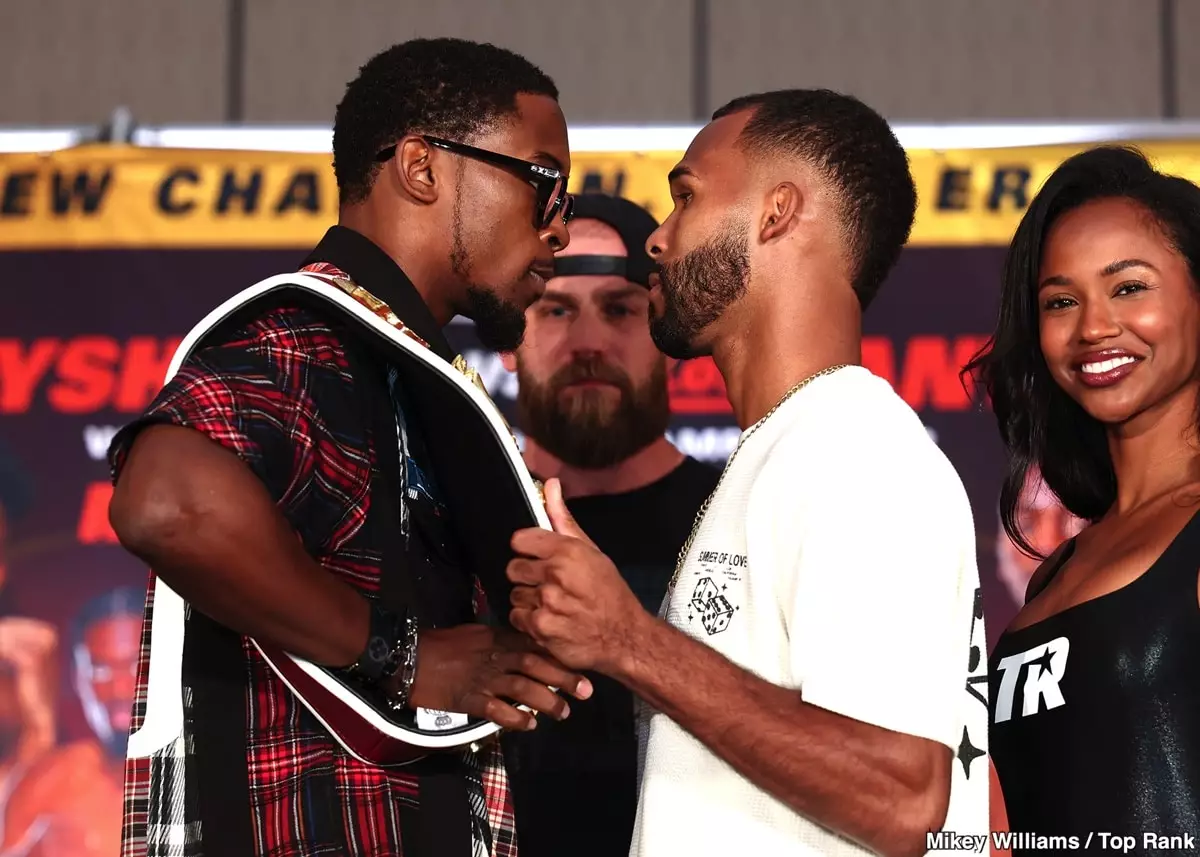In the high-stakes realm of professional boxing, every decision—whether in training or in preparation—carries significant weight. This idea was starkly highlighted with the recent controversy surrounding boxer Keyshawn Davis, who weighed in at an astonishing 4.3 pounds over the lightweight limit for his anticipated match against Edwin De Los Santos. Critics, including seasoned trainer Greg Hackett, have suggested that this hefty discrepancy was no accidental oversight but rather a deliberate strategy to evade a challenging confrontation. If Hackett’s analysis holds any validity, it poses a deeper question about the integrity and motivations of fighters navigating the pressures of competitive sport.
When a fighter approaches the scales, it is not merely a formality but a profound indicator of their dedication, perseverance, and strategy going into a bout. Experiencing a significant weight overage, as Davis did, may suggest a lack of commitment to the fight. Hackett’s accusations that Davis opted out of facing De Los Santos stems from an understanding of the strenuous preparation that fighters must endure to meet weight specifications, accompanied by the inherent danger presented by opponents deemed formidable.
Fear of Defeat: A Fighter’s Mindset
Davis’s hesitance in the face of Edwin De Los Santos, amplified by the shadow cast by his four-time conqueror, Andy Cruz, paints a portrait of a fighter wrestling with intimidation. One must consider that fear can be a dominant psychological force in boxing, affecting not just performance but also the willingness to engage with certain opponents. Hackett’s pointed remarks about Davis appearing “timid” when encountering Cruz could reveal an underlying unease that pervades Davis’s mentality. This fear may have been compounded by the daunting prospect of facing a quality opponent like De Los Santos, who, despite having been out of the ring for two years, still carries the reputation of being a knockout artist capable of flipping the tables swiftly.
The decision to weigh in so significantly overweight can thus be construed not only as a tactical maneuver but also as an admission of fear—an acknowledgment of the possibility of failure. Davis may have weighed his potential gains from the bout against the prospect of a damaging loss and chosen to escape rather than risk his undefeated status. In the context of a sport that often glorifies grit and resilience, such an attitude raises critical questions about the principles guiding athletes and the emotions that govern their choices.
An Evolving Scrutiny on Accountability
With a public platform that magnifies their actions, boxers like Davis become embodiments of broader values associated with sportsmanship and accountability. The boxing community is adept at discerning the disparity between authenticity and avoidance, and Hackett’s comments reflect a growing angst over the standards athletes are held to. This incident serves as a reminder that professionalism in sports is not solely about physical prowess but is also intrinsically linked to character.
Davis’s apparent choice to sidestep confrontation by manipulating weigh-in parameters presents an ethical conundrum: can one truly apologize for circumventing genuine competition? The inquiry prompts wider discussions concerning accountability in sports—where the expectation to engage honestly is fundamental to the sport’s integrity. The ramifications of perceived cowardice in the ring threaten to unravel the very fabric of competition itself.
The Future Landscape for Keyshawn Davis
As Keyshawn Davis navigates the fallout from this incident, he finds himself at a crucial juncture. Will he emerge from this controversy owning his decisions and seeking redemption in the ring, or will he continue down a path where reputation falters as fighters evolve and the integrity of the sport hangs in delicate balance?
The boxing community deserves athletes who embody resilience, fearlessness, and honesty. As the landscape continues to evolve, Davis’s next steps will undoubtedly be scrutinized under a microscope, influencing not only his career trajectory but also the expectations placed upon him as a role model within the sport. His choices ahead may ultimately redefine what it means to be a champion, both in and out of the ring.

